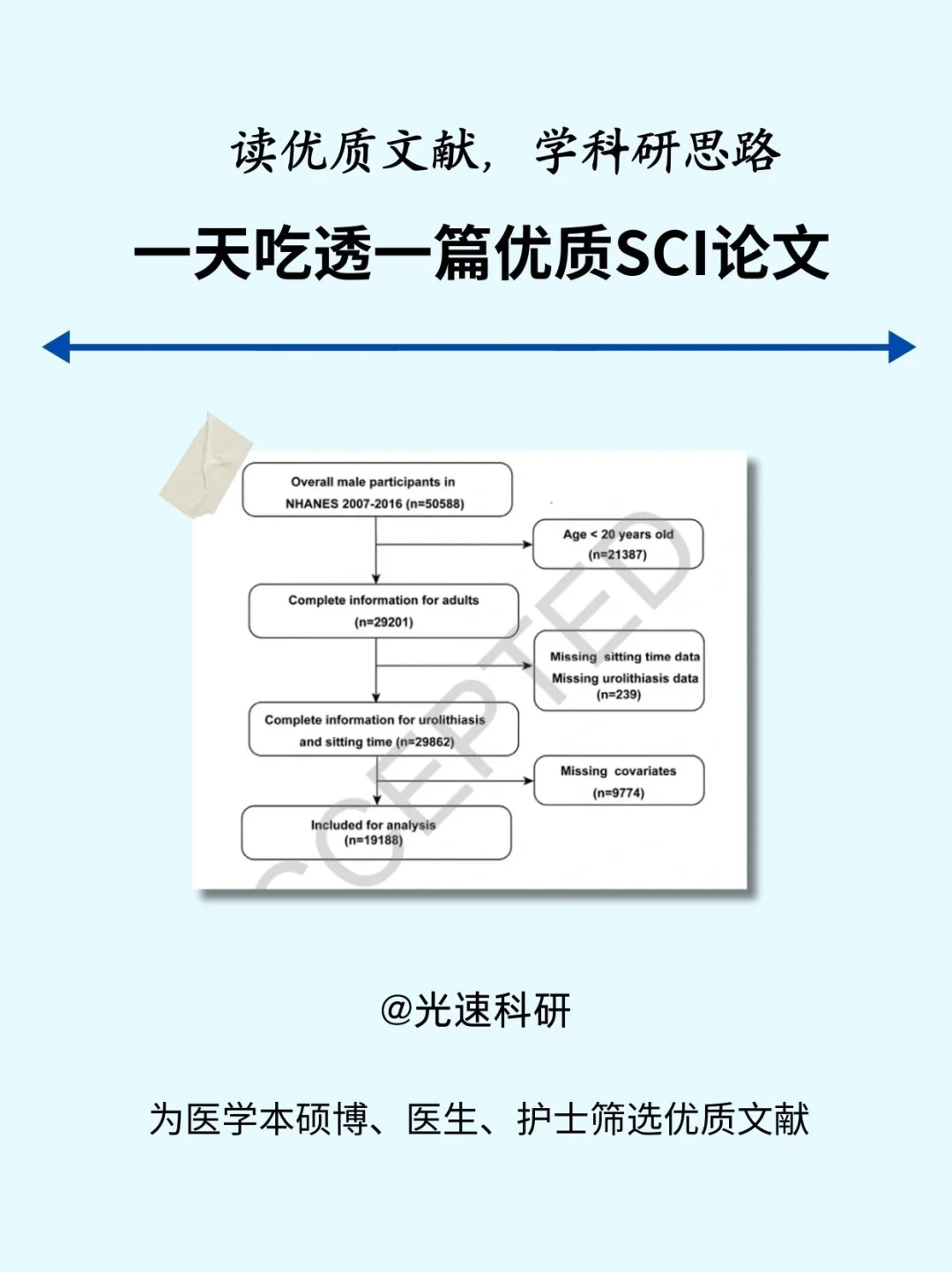
Nhanes数据库1区12.5分解读!













今天给大家分享一篇在 2024年5月发表在《Int J Surg》(1区,IF=12.5)的文章。本文这项研究利用了美国国家健康和营养调查(NHANES)2007–2016年的数据,探讨了日常坐着时间与肾结石发病风险之间的关联。
暴露:本研究的暴露变量是日常坐着时间,通过问卷调查获取,参与者被问及在一个典型的日子里坐着(或躺着)的时间总和,包括工作时坐在桌前、与朋友坐着、在车、公交或火车中旅行、阅读、玩牌、看电视或使用计算机的时间。日常坐着时间被分为四个类别:少于4小时/天、4至6小时/天、6至8小时/天、以及超过8小时/天。在后续的分析中,日常坐着时间少于4小时/天的群体作为参照组。
结局:研究的主要结局是肾结石的发生,通过问卷中的肾脏状况-泌尿科调查部分来识别,具体问题是“您是否曾经患有肾结石?”,答案为“是”的参与者被视为有肾结石的历史。